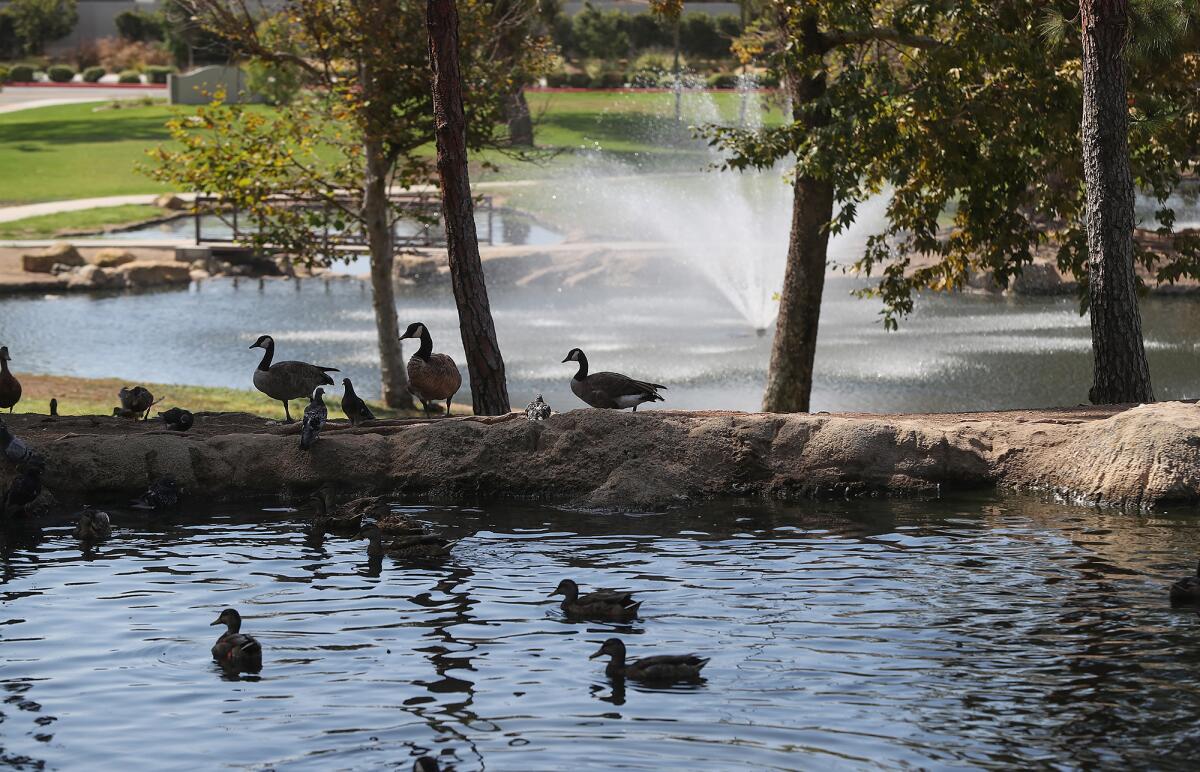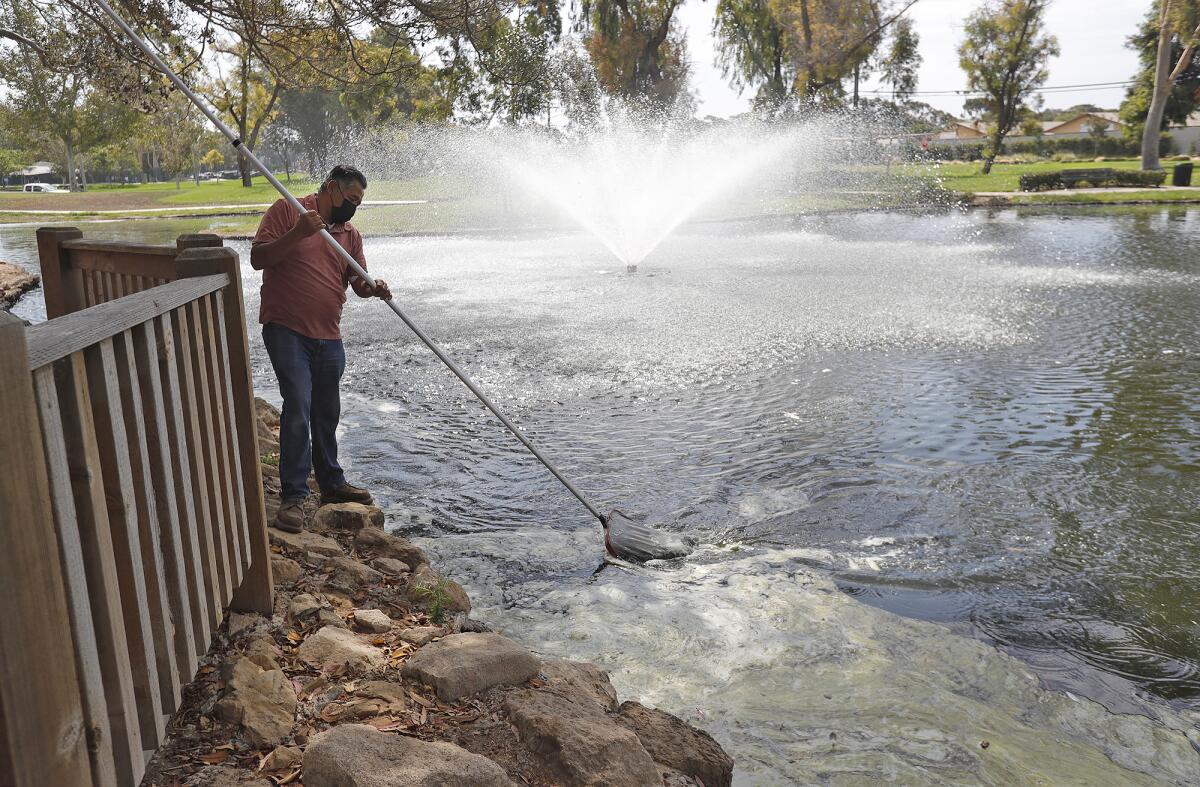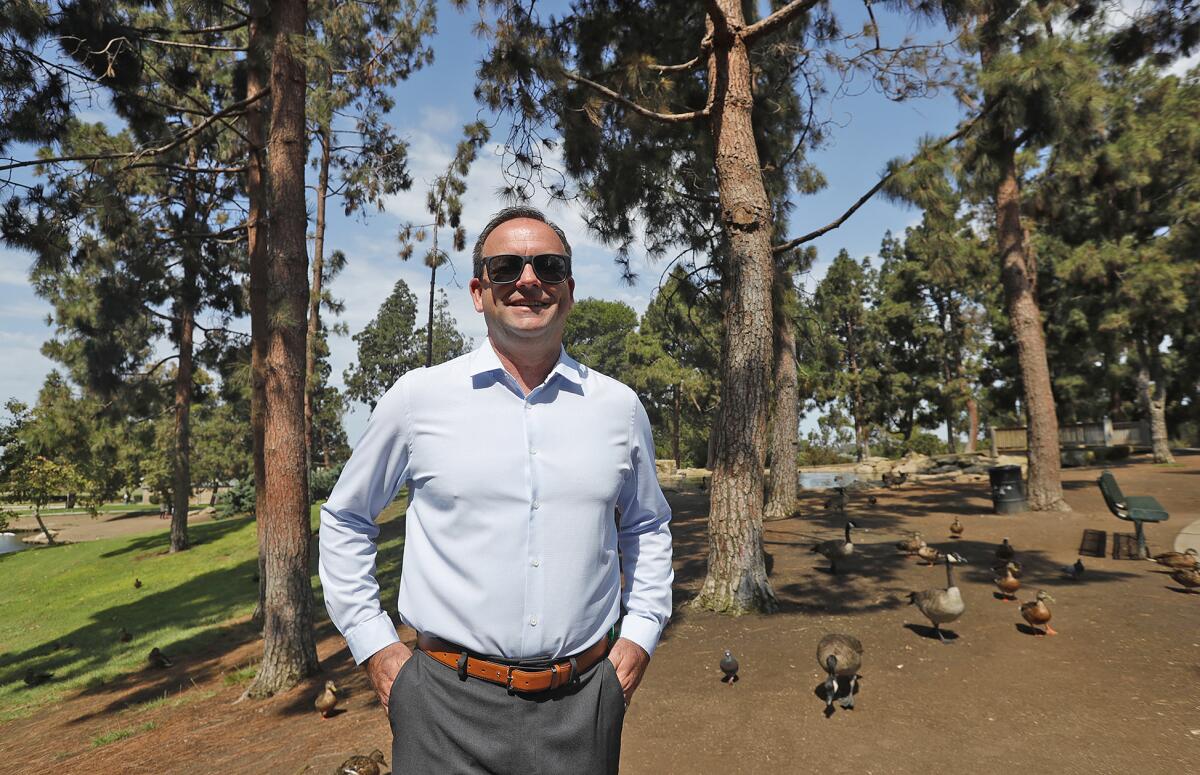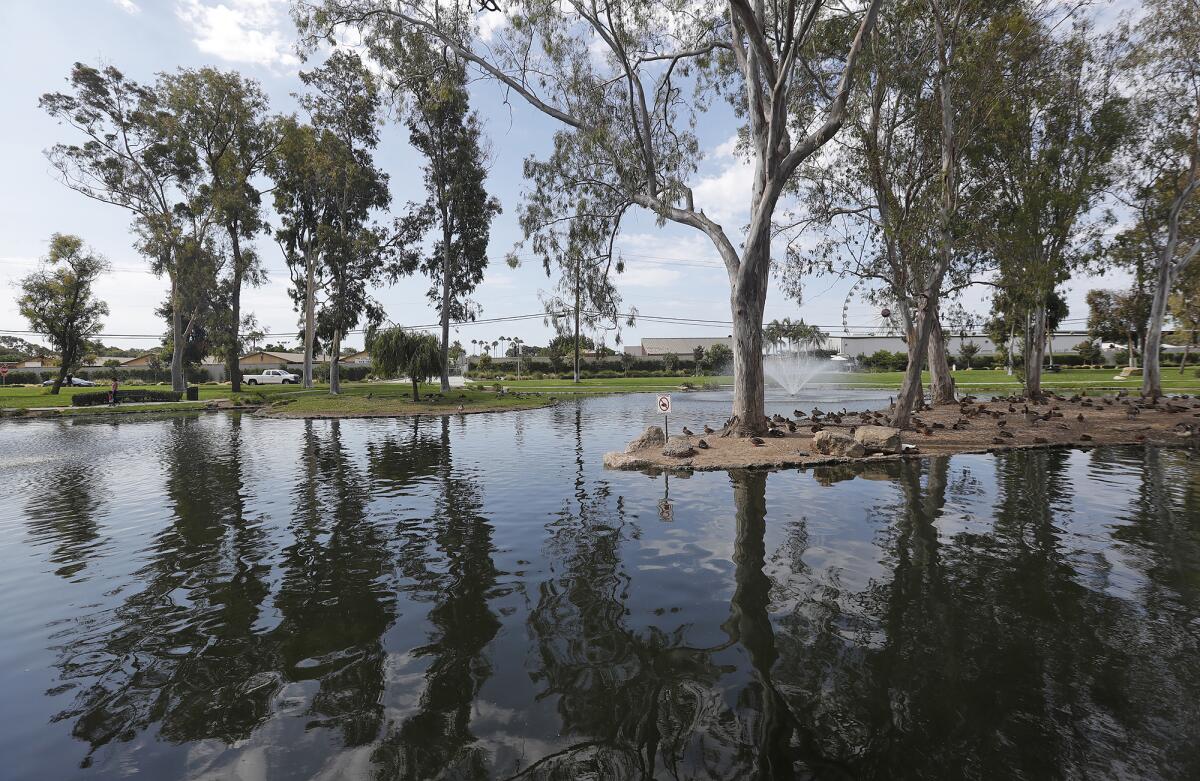Costa Mesa hatching $2M plan to clear up TeWinkle’s lakes, where bird poop is a problem

- Share via
Costa Mesa mom Dawn Sarkisian regularly visits city’s TeWinkle Park so her two young daughters can walk amid its lakes and ponds and see the migratory waterfowl, turtles and other wildlife that reside there.
Dedicated in 1965, the 49-acre park is known for its man-made water features, including two lakes subdivided by a land bridge and abutted by ponds whose contents cascade into waterfall outlets, creating an on-site circulatory system.
Traversing the Arlington Drive acreage are hundreds of geese and ducks, who barely flinch at passing cars and walk up to visitors in search of food, although feeding wildlife is prohibited. It’s a pretty idyllic scene, with some exceptions.

“The poop situation — it’s not ideal,” Sarkisian said of the droppings that adorn walking trails, are strewn about the park’s thick lawns and line lake bottoms. “We just tell the kids to go around it.”
Poop is just part of an ongoing problem at TeWinkle Park, where the lakes leak from 18 to 24 inches of water each month, causing erosion and instability in the soil and shorelines around them and requiring refilling.
Pumps operating the water circulation system are nonfunctioning and in need of repair, while water quality has suffered from algal blooms caused by poor circulation and “excessive nutrient inputs,” according to maintenance services manager Rob Ryan.

“It’s gotten worse over time,” Ryan said. “We used to have circulation jets that would sit in the water and move things around. But air got in the system and threatened the pumps, so the pumps are off now.”
Along the collective 3,250 feet of shoreline, light green algae-laden foam collects in crevices where water doesn’t get moved by the fountains and jets that are still operable, creating extra work for maintenance crews. Turtles sunbathe on circulation pipes once submerged that have been loosed from lake beds.
To help clear things up, city officials are planning $2 million in upgrades that will include a redesign of the lake and pond areas, new pumps and the addition of an ozone water treatment system.
The Costa Mesa City Council in December approved a $120,425 contract with Fountain Valley-based Pacific Advanced Civil Engineering (PACE) to draft a vision for the improvements.

Part of that vision includes creating habitat spaces attractive enough to keep birds from congregating in areas used by the public, according to Ryan.
“Now, they go where they want,” he said. “So, some of the design options include adding some natural barriers to direct the waterfowl to one area as much as possible.”
PACE consultant Andy Komor during a July 28 meeting of the city’s Parks, Arts and Community Services Commission explained the overarching goals are to minimize water loss, improve flow and quality and to naturally manage waterfowl.

Consultants are comparing two scenarios to achieve those ends. Both involve building back shoreline and spreading polyethylene liners along the lake bottoms. But one eliminates a small island in the middle of the southernmost lake, which contains several mature trees, while the other retains it.
“It’s a big park. And there’s only 2 acres of water,” Komor said, indicating a preference for the first option. “We want to make that water look as big as it can and also be as deep and clear as it can be.”
Completing the project will require draining lakes and ponds in rotation and temporarily relocating wildlife. Ryan said he’s hopeful, once a budget is secured, work might begin next year.
For Sarkisian, who on Monday had to shake the wheels of her 3-year-old daughter Charlie’s scooter free of mud and muck, doing something about the water would be an improvement.
“That would be really nice,” she said. “The water is so gross and it’s full of bird poop. So, when you walk by the fountain and it sprays you, you think it’s nice, but it’s also gross.”

All the latest on Orange County from Orange County.
Get our free TimesOC newsletter.
You may occasionally receive promotional content from the Daily Pilot.







